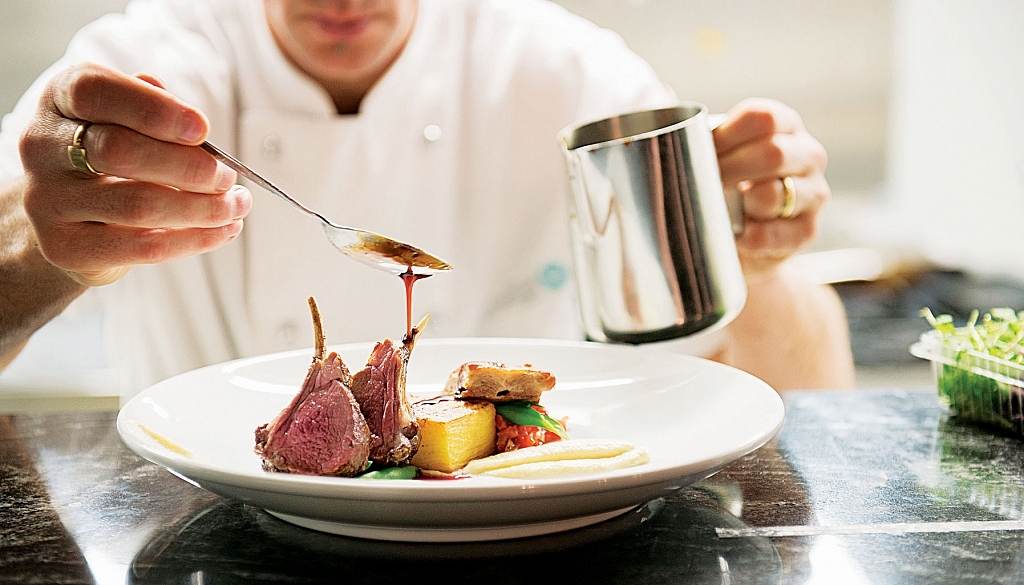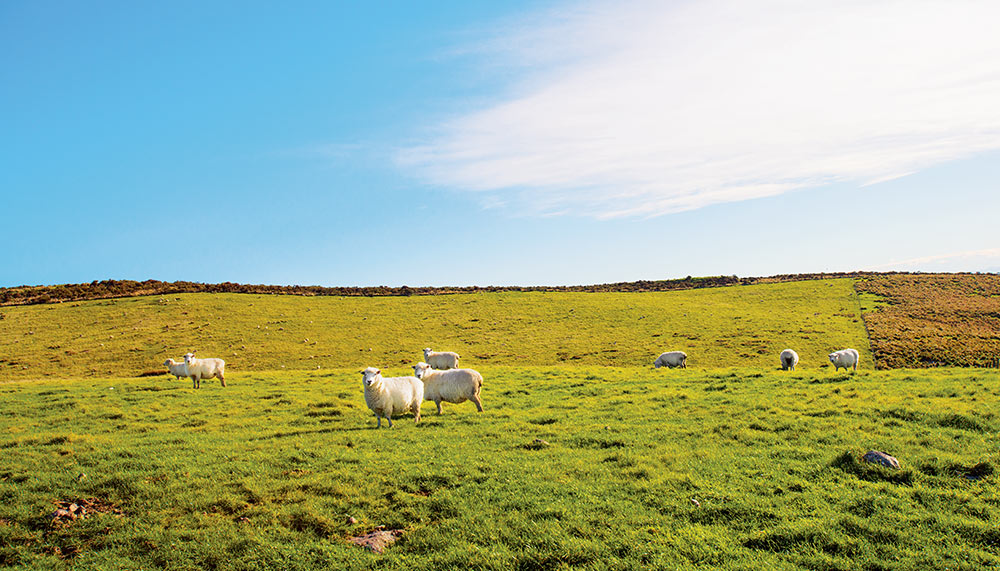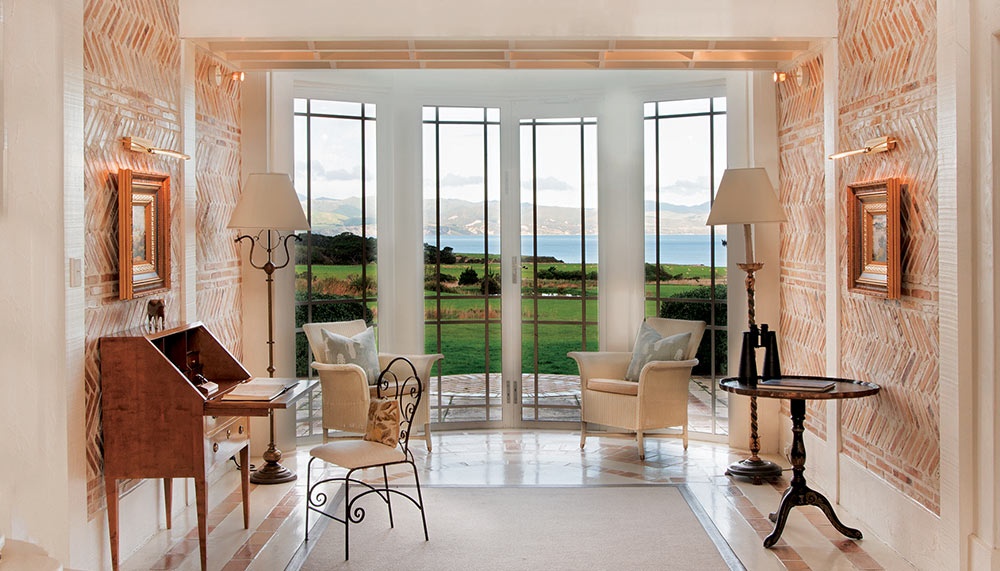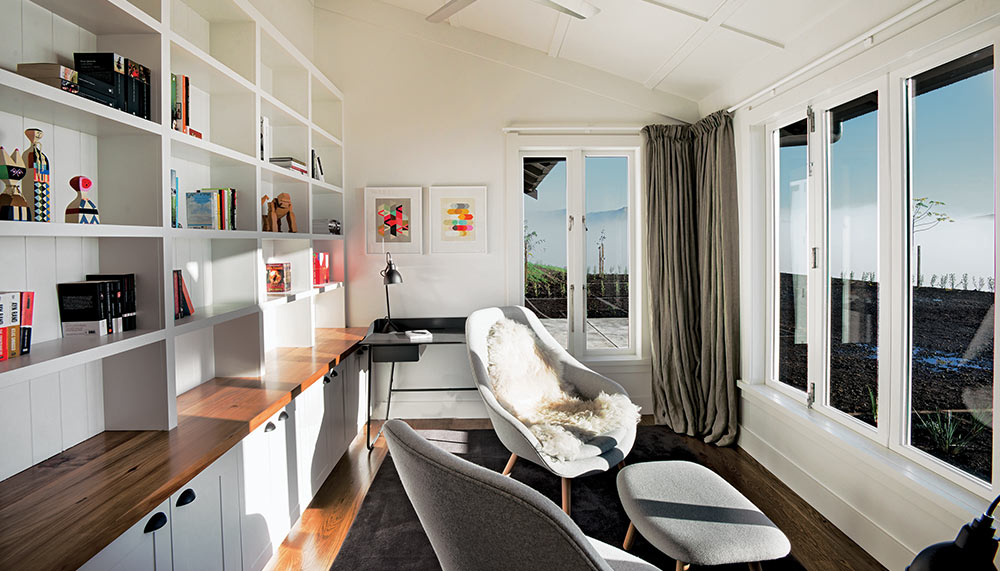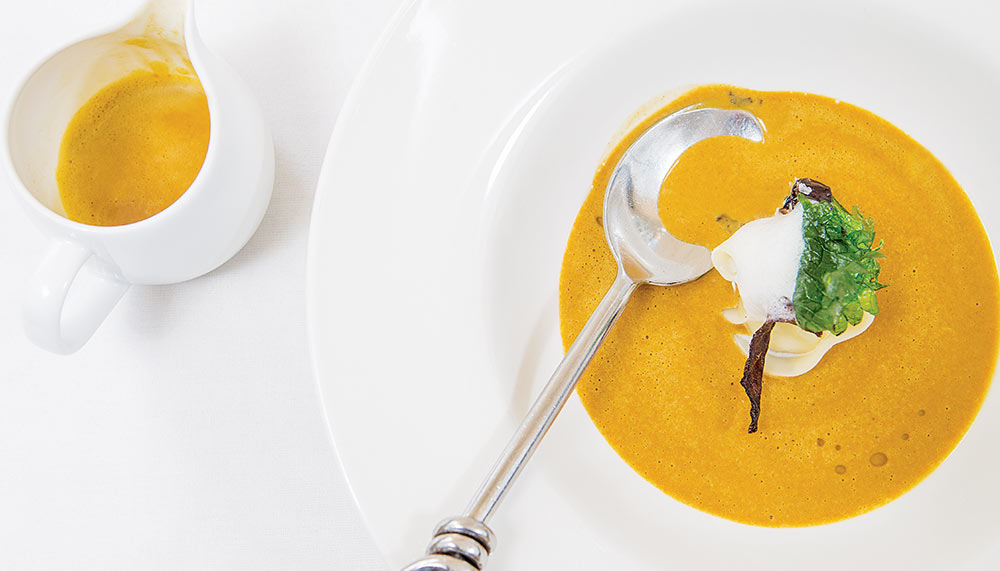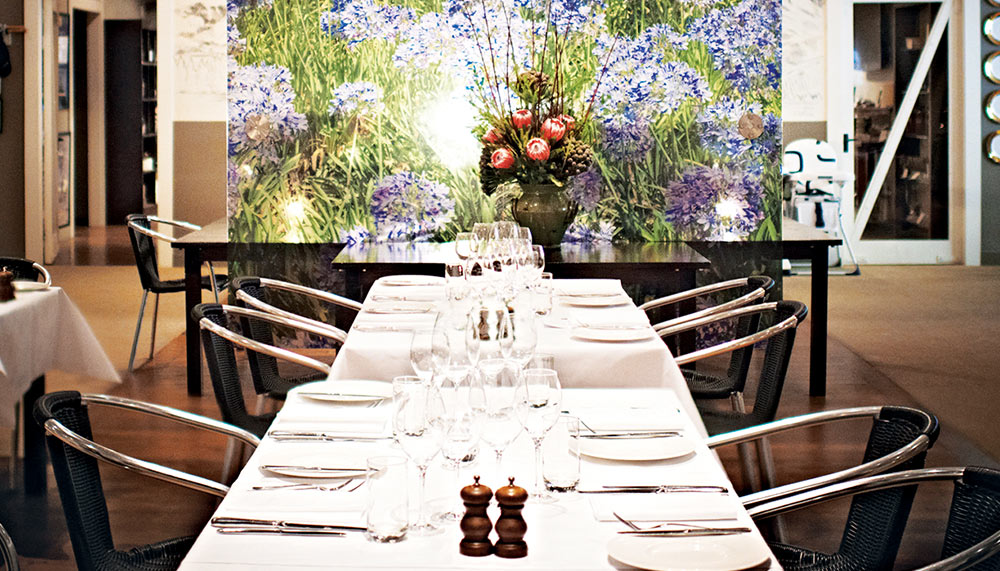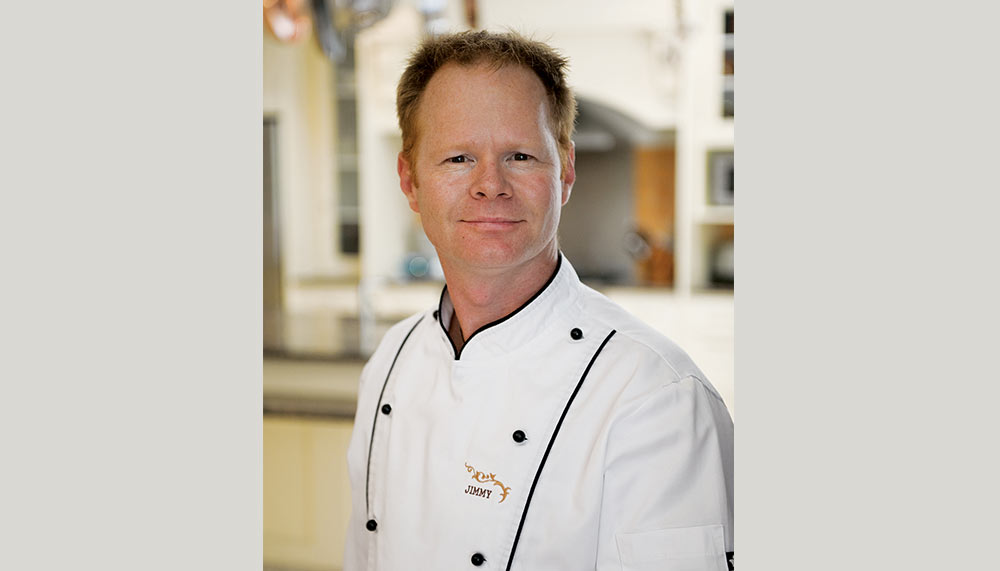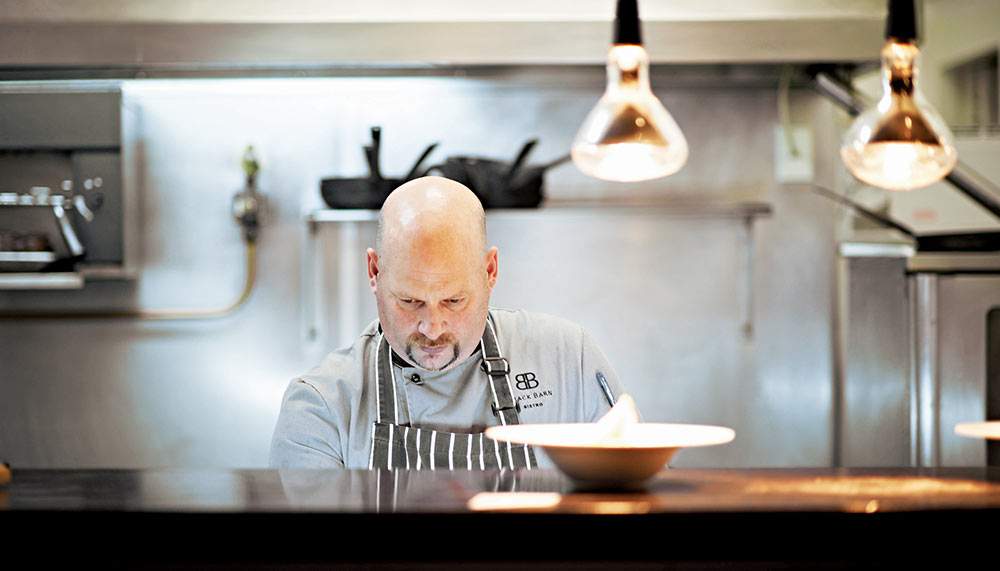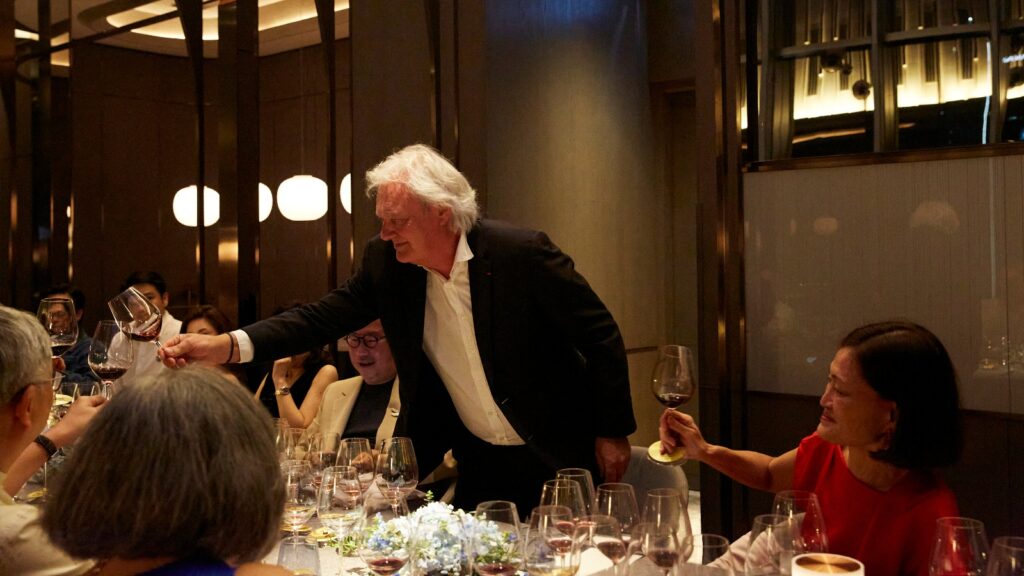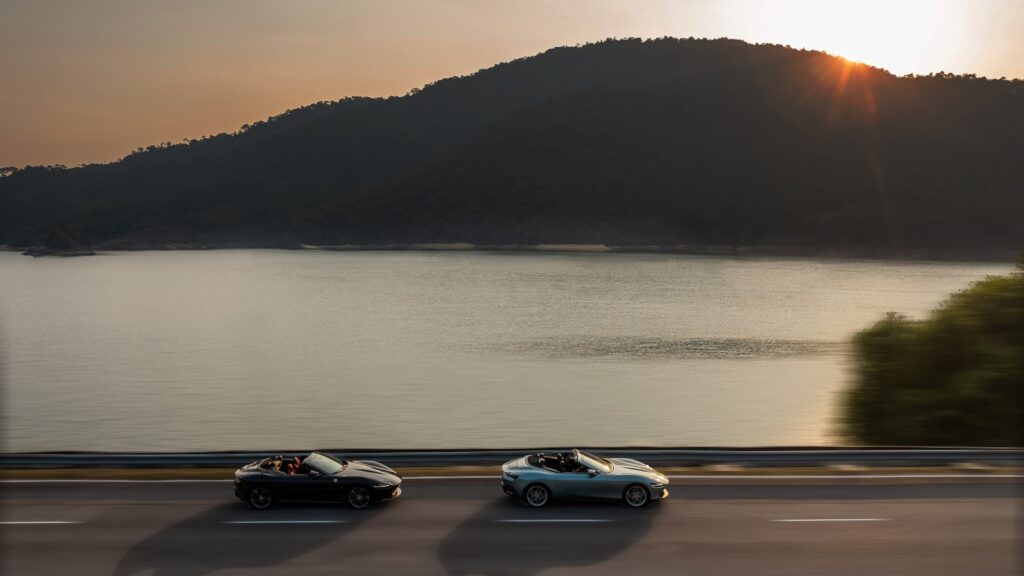Exceptional cuisine down south
It was a crisp May morning, and I was sitting patiently in a New Zealand traffic jam. To the left of the winding dirt road, rolling hills tumbled into one another like golden-green waves until they disappeared suddenly into the shimmering horizon of Pigeon Bay. To the right, a steep slope rose some 10 metres above the vehicle, so close that it nearly scraped the side mirror. Directly in front, two dozen cows awkwardly crowded the road, shuffling uncomfortably between the bumper of the car and a cattle fence 20 yards ahead.
Beside me in the driver’s seat, Liz Buttimore – then the general manager of the South Island’s new Annandale lodge – was clearly concerned. Even the most skilled driver would have balked at negotiating our dusty cliffside path in reverse, and pushing forward through the jittery cattle would have surely chased them off the rocky ledge to our left.
“I’ll have to hike to the other side,” Buttimore said as she shimmied through the sliver of space allowed by her blocked door. Dressed in black slacks, a white button-down shirt, and black flats, she hardly looked prepared for a hike. But my companion soon proved her mettle as a native Kiwi by disappearing behind a green mound and, several minutes later, reappearing on the other side of the gate to allow our anxious roadblocks safe passage.
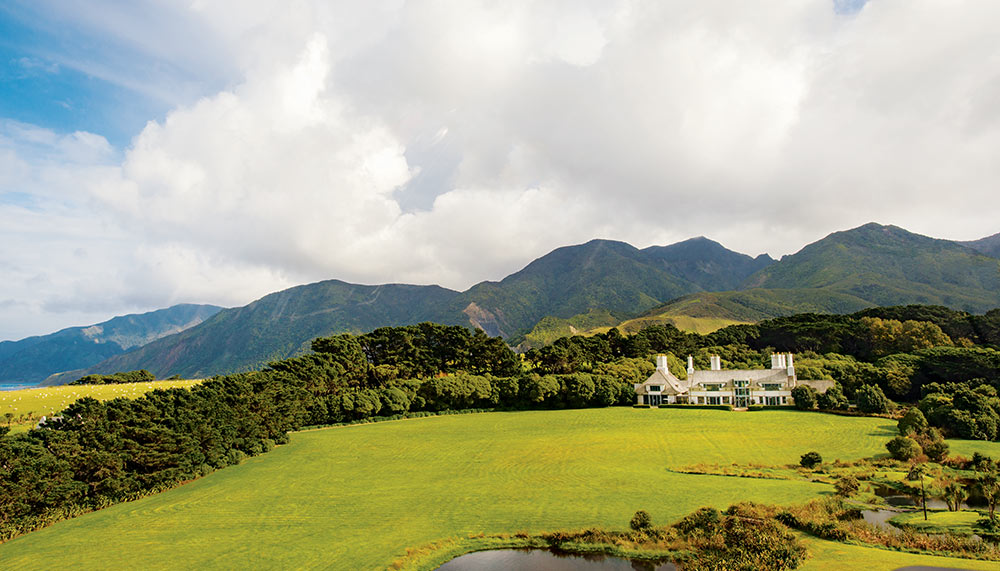
This bovine blockade on the cliffs of Annandale was the first sign of gridlock I had encountered in New Zealand, a country twice as large as New York State with a population half that of New York City. Indeed, livestock crossings are nearly as common as stoplights – and a cattle fatality can be front-page news – in this land where sheep outnumber human residents 7 to 1. It is no wonder, then, that livestock – or rather, meat – was what had brought me to Annandale, a 4,000-acre sheep-and-cattle farm and lodge set on more than 10km of coastline just outside of Christchurch.
Opened in September 2014, Annandale has a sheep-to-human ratio even greater than the national average, with about 4,000 sheep (plus 500 cattle) and a maximum of only 30 guests. As Buttimore and I combed the vast property dotted end to end with the fluffy creatures, we passed four villas ranging from a traditional shepherd’s cottage to a modern glass-and-steel residence located among private coves, isolated valleys, and grazing hills. Arriving at the five-bedroom Homestead, a 19th-century harbour-front manor with views of the Pacific Ocean, I discovered I had a swimming pool, tennis court, and fitness centre all to myself. The only recreation on my mind, however, required a fork and knife.
After settling in, I pulled up a chair in the Homestead’s gourmet kitchen, where Bradley Hornby – then the chef of Annandale – was hard at work on the evening’s seven-course tasting menu. Hornby, who previously served as the executive chef at the North Island’s Huka Lodge, grew up less than 150 miles from Annandale in the fishing and agriculture town of Timaru, and he was eager to share the region’s bounty with me.
“If we don’t have it here, we can’t really use it,” he said while plating the evening’s first course. “We’re so far out, we can’t expect to source something and get it fresh. So I watch the cycle of the plants and decide what will go well together. I don’t have a routine or a set menu. It’s always something new, and no plate is ever the same.”
The evening’s menu was full of the seasonal combinations Hornby favours, from local prawns with chorizo oil and tomatoes from the lodge’s garden to seared Tasman Bay scallops served with pickled daikon, ancho chili peppers, and an orange emulsion. Meat for the lamb croquette (accented with pickled parsnip and beetroot) and smoked rib-eye steak (accompanied by pasta puree and kale in red-wine vinegar) also came straight from Annandale’s farm.
Horby’s approach, I would discover, is the norm in New Zealand. While farm-to-table has become a global catchphrase in recent years, here the practice of eating local has never fallen out of fashion. For centuries, independent family-owned farms have fed the country’s sparse population and fuelled its economy. In more recent decades, homegrown Kiwi delicacies such as green-lipped mussels and manuka honey have become coveted worldwide exports. Still, despite its infrastructure and abundance of local delights, New Zealand has struggled to define its national cuisine. Recently, however, chefs at Annandale and other lodges throughout the North and South Islands have begun to clarify their country’s place on the culinary map, spinning modern and refined fare built on New Zealand’s deep agricultural roots.
My gastronomic pilgrimage had begun at Otahuna Lodge, a 120-year-old estate set on 30 acres of gardens and farmland just south of Christchurch. Adorned with a vibrant patchwork of stained-glass windows, gilded wallpaper, and kauri-wood panelling, the Relais & Châteaux lodge is a stunning revival of one of the country’s oldest mansions. The U.S. owners, Miles Refo and Hall Cannon, purchased the property in 2005 with plans to restore its Queen Anne–style manor, as well as its Dutch gardens, historic potager, and rambling daffodil fields. Upon opening in 2006, Otahuna (which means “little hill among the hills” in the Maori language) became a blueprint for New Zealand’s culinary renaissance.
Behind the seven-room gabled mansion, I discovered an expansive garden covered in every imaginable hue of green, brown, and yellow. Ancient English oak trees shaded Jerusalem sunchokes and Tokyo Cross turnips, pumpkins and parsnips, and 20 different varieties of tomatoes. Daffodil fields dating to the estate’s early days remained a vibrant carpet of 1.5 million blooming bulbs. In the mushroom crypt, porcinis and shiitakes erupted from giant logs, and in the melon house, fresh cantaloupes, kaffir limes, and pineapples grew fat and juicy. There was also a chicken coop, a 2-acre orchard, an herb farm, and a pigsty resembling a miniature open-air chalet.
In the kitchen, where jars of homemade jams, pickled vegetables, and roasted tomatoes lined the shelves, Otahuna’s executive chef Jimmy McIntyre showed me a mound of fresh cauliflower that he intended to blend into a soup with seared scallops and truffled mushroom salsa for that night’s dinner. From the meat cooler – nearly as big as a house – he procured prosciutto, coppa, bacon, and sausage, all from pigs raised on-site. “When you are raising your own stock, you have an obligation to use the entire animal,” he said. “Between the animals we raise and the fruits and vegetables we grow, we are almost completely self-sufficient.”
McIntyre’s purist approach to ingredients extends to his cooking methods. “It’s not about Michelin ratings. It’s not about chopping everything finely,” he said. “Here, you can be a bit rustic with it.” Still, the night’s five-course degustation menu – paired with wines from Lake Wanaka, Waipara, and Marlborough – displayed the kind of refined artistry and intense creativity that often lead to awards and stars. After the cauliflower soup and a salmon ceviche prepared with asparagus and pickled lemon and rocket, a perfectly tender breast of chicken arrived with a smattering of autumn vegetables and a slash of kumara-and-parsnip puree. Dessert was no less meticulous, comprising a simple wedge of Meyer vintage Gouda followed by a not-so-simple coconut-lime pudding served with a rum pineapple flambé and an appropriately rustic mango salsa.
Despite this final touch – which seemed more Caribbean than Kiwi – my dinner at Otahuna, as at Annandale, imparted a profound sense of place. Following my visit to the latter, I headed for the North Island and Hawke’s Bay, a region known as much for its Cabernet Sauvignons and Merlots as for its trout-filled rivers and streams. Amid this idyllic agricultural milieu, the Black Barn winery and resort is cultivating a homegrown culinary experience of its own.
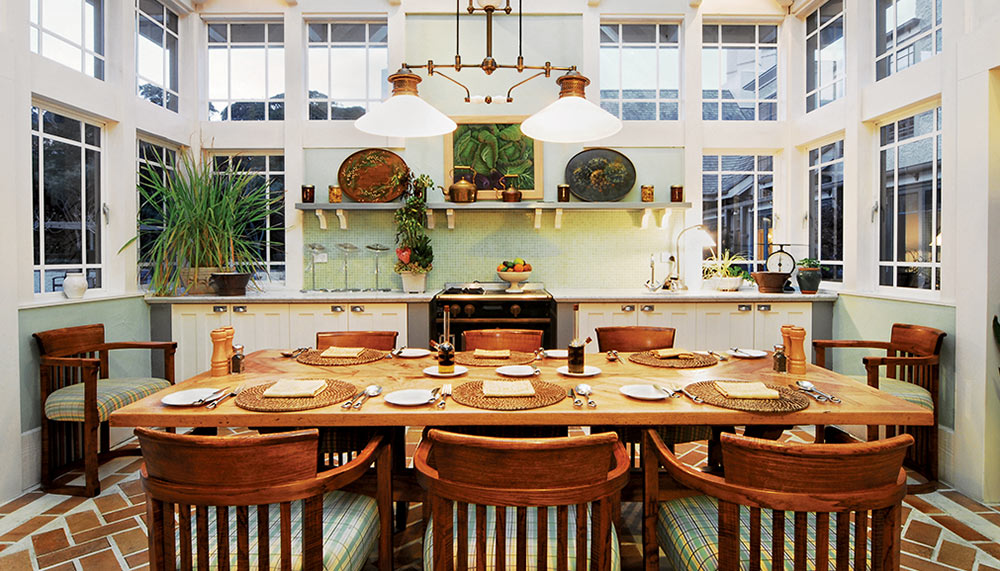
First established as a winery in 2003, the 25-acre property includes a fine-dining restaurant, a farmer’s market, and a collection of luxury villas known as Black Barn Retreats. Kim Thorp – who co-owns Black Barn with his partner, the architect and former farmer Andy Coltart – can attest to the transformation that is taking place throughout his country. “We were very insecure for a long time because we lacked any kind of culinary identity,” he said over dinner at Black Barn Bistro. “New Zealand is really only a few centuries old. We don’t have deep-rooted traditions that dictate the way things are done, and therefore the way things are not done. We are working with, essentially, a blank page, which means we can experiment and fine-tune a style that is indicative of New Zealand itself.”
That nascent style reaches a peak at Black Barn, where the autumn menu that night was filled with such seasonal ingredients as chutney-pear paste, star-anise-infused pumpkin, and salt-roasted beetroot. The twice-cooked pork belly – served with chilli-spiced pears, blackened bok choy, and mashed kumara potatoes – was so tender it seemed to disintegrate the moment it hit my tongue. The portobello mushrooms, sourced from the Te Mata Mushroom Company just 2 miles away, were equally impeccable, served with quinoa and local quark cheese.
The morning after my meal with Thorp, I woke up in one of Black Barn Retreats’ villas and plodded into my kitchen to explore a basket full of fresh provisions: pears, feijoas, and kiwis gathered from the property’s gardens; a half dozen brown eggs from its chicken coop, and a bag of coffee beans from Hawthorne, Hawke’s Bay’s source for the perfect New Zealand flat white. Properly stuffed, I bade Black Barn farewell and set out for one of the North Island’s most luxurious lodges, located on one of the country’s oldest farms.
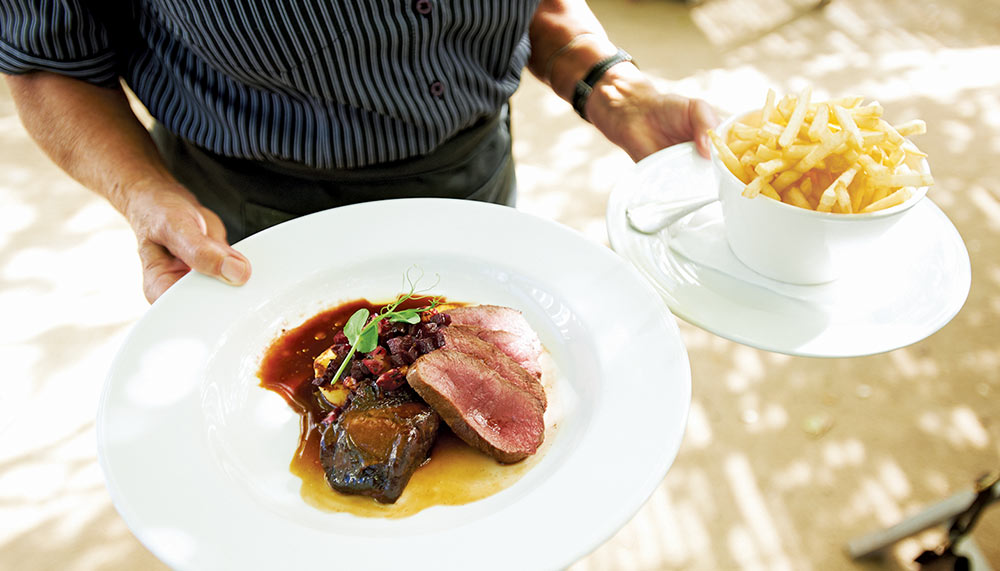
I arrived at Wharekauhau as most visitors do: by helicopter. A quick jaunt from downtown Wellington, the 15-minute flight displayed a magical scene of rolling pastures populated by wild pigs, cows, and thousands of sheep. From above, the Edwardian-style main house that sits at the centre of Wharekauhau’s 5,500 acres appeared a perfect oasis nestled at the foot of an emerald mountain and bordered by a ribbon of black sand and choppy sea. It had been raining all day, but as the helicopter came to rest on the grassy helipad in front of the lodge, the first speck of sunlight suddenly broke through the clouds.
With several hours to spare before dinner, I hopped on an ATV to explore my pastoral surroundings, heading west past the lodge’s vegetable garden and 50-year-old lemon tree and then south toward the coast dotted with giant driftwood. Circling back from sand to grass, I zipped through Romney and Texel sheep and Angus and Simmental cattle. I forded a shallow, rocky stream and crossed the Mukamuka Valley before finally stopping at Wharekauhau’s woolshed, where Brad Riggs, one of the lodge’s shepherds, showed me the art of sheep shearing.
My appetite sufficiently stirred from the afternoon’s journey, I returned to the main house just in time for dinner. Though the formal dining room was set and the fireplace stoked, I opted for a seat at the kitchen counter, where executive chef Marc Soper was preparing the evening’s feast. Soper has worked in famous kitchens around the world, from Michelin-rated restaurants in Germany and Switzerland to Thomas Keller’s French Laundry in Napa, California. That night, the results of his distinguished tutelage were clearly on display, though it was equally clear that Soper subscribes to Hornby’s school of thought, combining unlikely flavours – brown sugar and Ōra King salmon, elephant-ear fungi and honey soup – for a menu chock-full of New Zealand ingenuity.
The rain started up again just as my final dinner in New Zealand came to a close. I buttoned my coat (100 percent wool, of course) and hurriedly began the short walk back to my cottage. In the dark, just across the pond in front of the main house, I glimpsed the silhouette of a herd of sheep shuffling through the grass, perhaps in search of a nice place to rest for the night. Hugging my coat closer, I stopped to admire the animals, allowing the local livestock to slow my journey one last time.
